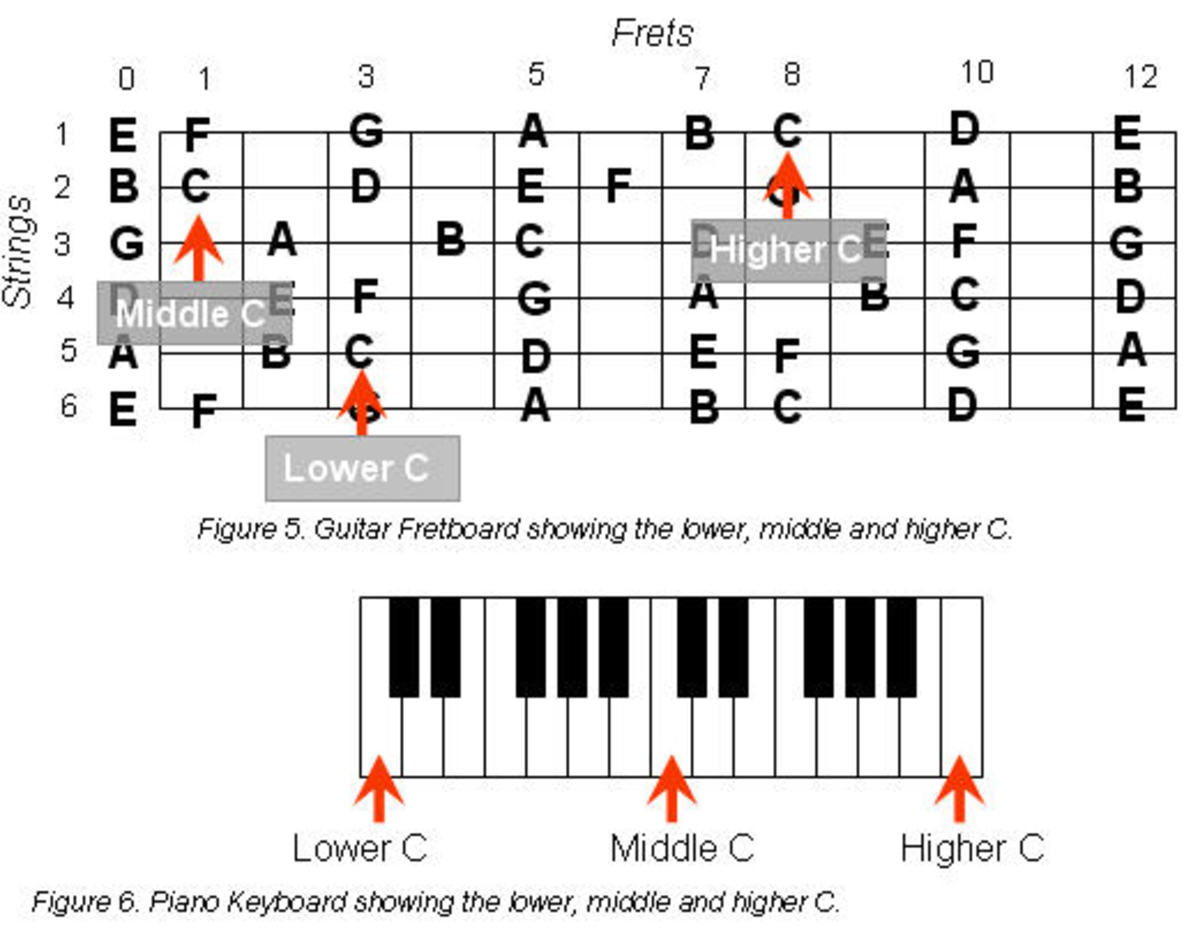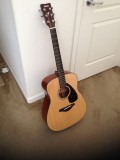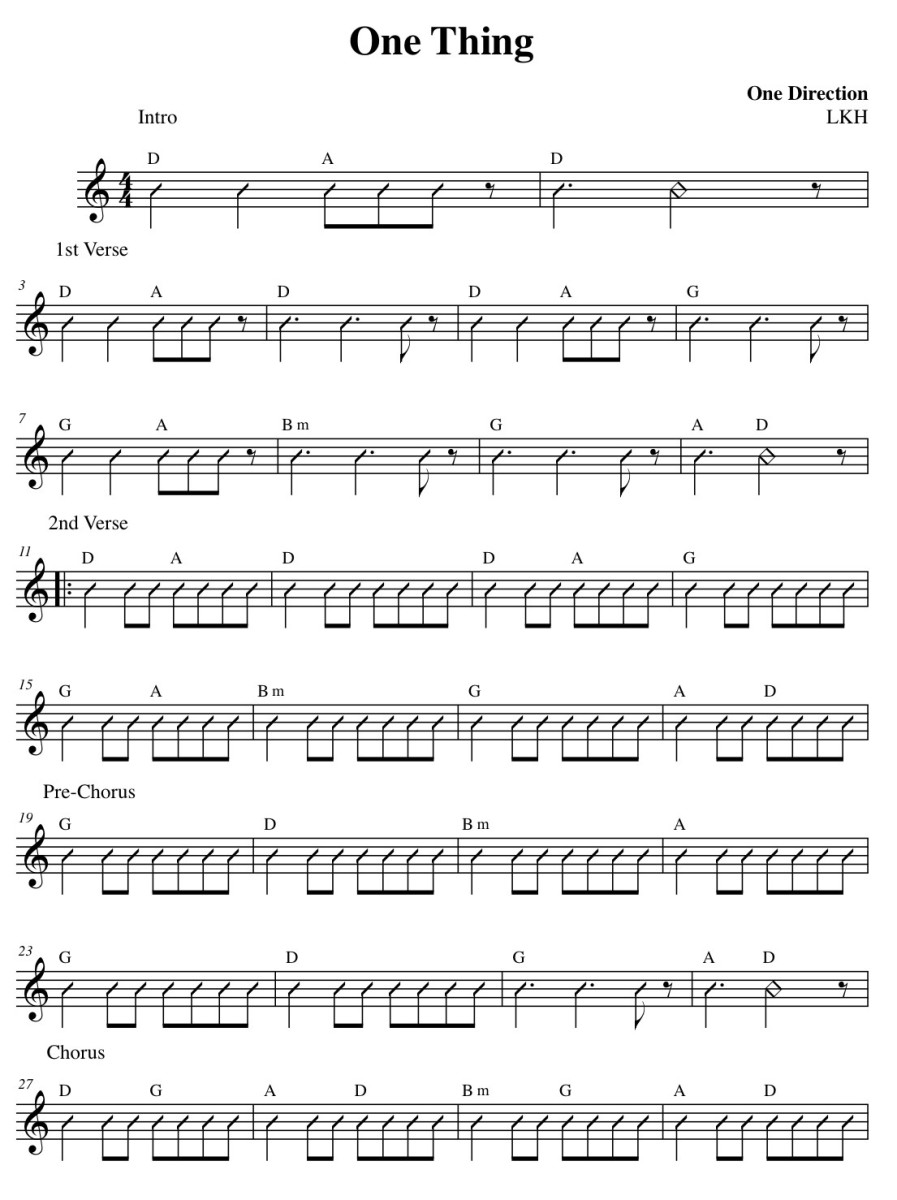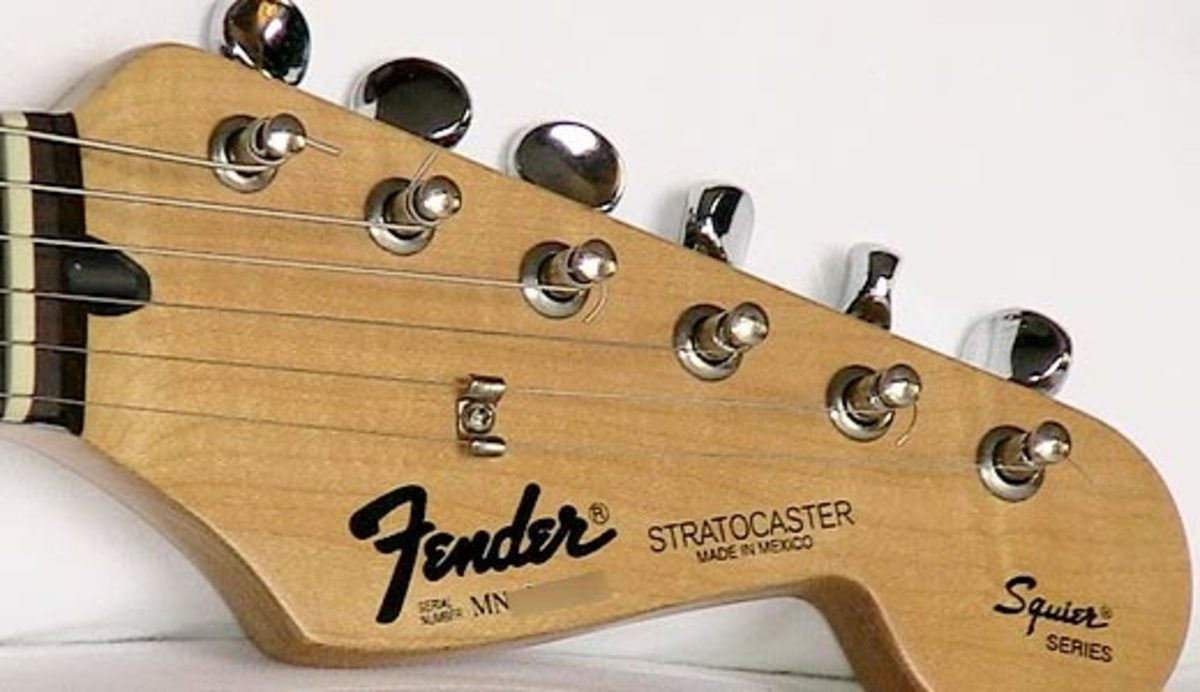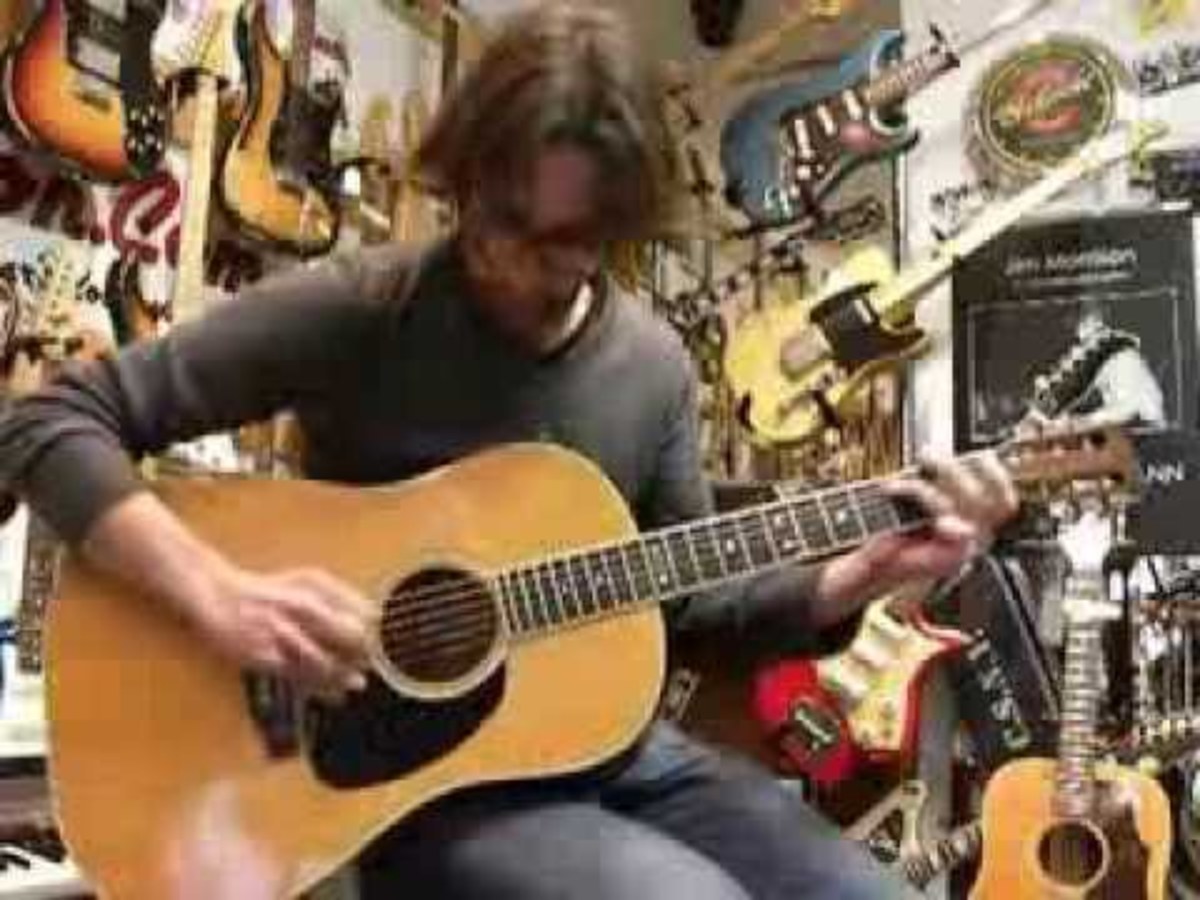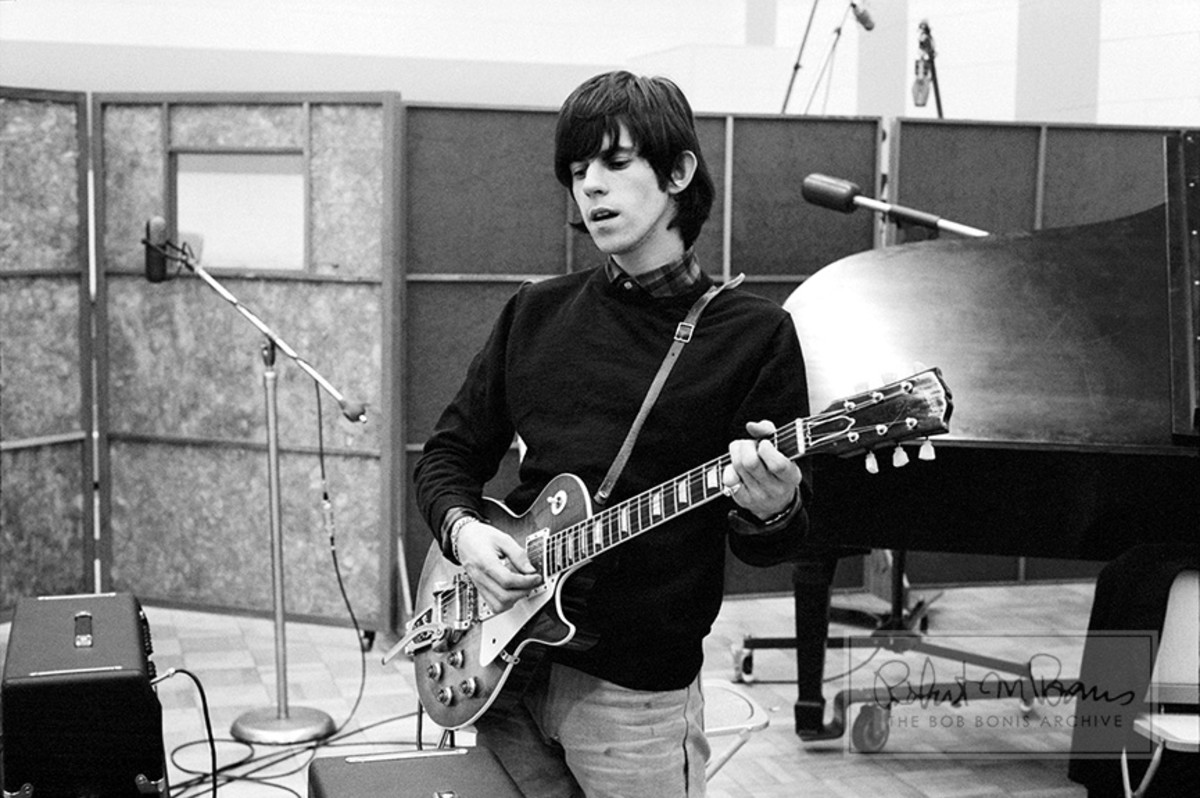Guitar Chord Lesson
Guitar chords info
Generally when I'm teaching guitar I try to cover easy chords first - because it gives people encouragement when they can start playing their favourite songs in just a couple of hours.
My other hub Guitar chords 101 will also be really useful if you are new to guitar playing.
Practice in 10-minute sessions for the most efficient use of your time - if you can even get a couple of these sessions done every day you should make very rapid progress.
A good place to start is practicing changing from Em to A, as you are moving a similar shape across by one string.
Reading the chord grids
- The six vertical lines are the strings, the horizontal lines are the frets. The headstock would be at the top of the chord grid.
- Play these chords in groups of 4, as they are related.
D chords - play the open 4th string as the bottom note of the chord, don't play strings 5 and 6, the thickest strings.
A chords - play the open 5th string as the lowest note of the chord, as above.
The first three chords are like the chords in Something, by The Beatles. If you wanted to play this song in the key of D, use the first line, for A, use the second line, for E use the third line. It's the same sound and the same chord progression, although at different pitches.
In each case, one string is moving, down 1 fret at a time. Altering the third chord will change from major to minor - again, only one string needs to change.
Reading the chord grids vertically - column 1 is major, col.2 is maj7, col.3 is 7th, col.4 is m7 (minor 7)
Useful chords for guitar
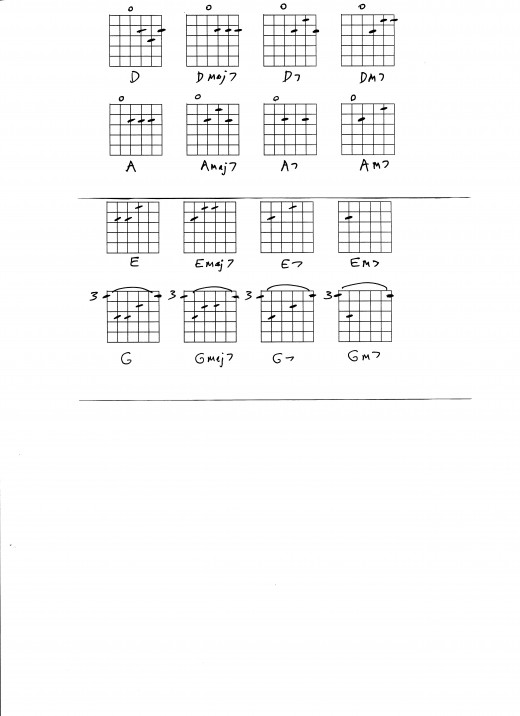
More uses
- If you now read the chords in a vertical line, A, D and E are used together, as the I IV and V chords in the key of A, the basis for hundreds of songs.
- A7, D7 and E7 are used together - the chords for a 12-Bar blues in the key of A.
- Am7, Dm7 and Em7 are used together - the chords for a minor 12-bar blues in the key of Am.
Last line
If you use a barre chord ( for more info see my hub Barre chords and how to avoid them) you can just use the same shapes all over the guitar fretboard to make other chords. This example is for G chords, with the root note of the chord on string 6 (and also string 1) - but moving the barre to fret 5 instead would give you chords in A, fret 7 chords in B, fret 8 chords in C, etc.
Chord theory
The D chord has three notes - D, F sharp and A. If you add note 7 from the D major scale, you have added a C sharp note, the maj7 note. If you add the flat 7th note (C) you have a D7.
If you take a D7 chord and flatten the third too, you get Dm7.
There is only one note that changes a chord from major to minor, which is the 3rd. Easy to see this if you compare E and Em and A and Am.
All the other chords work in the same way - it's easier to understand on a piano keyboard, see my hub music theory basics. Of course, at some point you just have to learn the notes!
Harmonised Scales
An essential step is learning the harmonised scales for the common guitar-friendly keys. This is covered at length in my other hubs.
In the key of C (C is the home chord)
C, Dm, Em, F, G7, Am, Bm7b5
All easy songs will use combinations of these 7 chords.
When you change key, the pattern will remain the same. This is good news, as you can transfer information that you already know.



